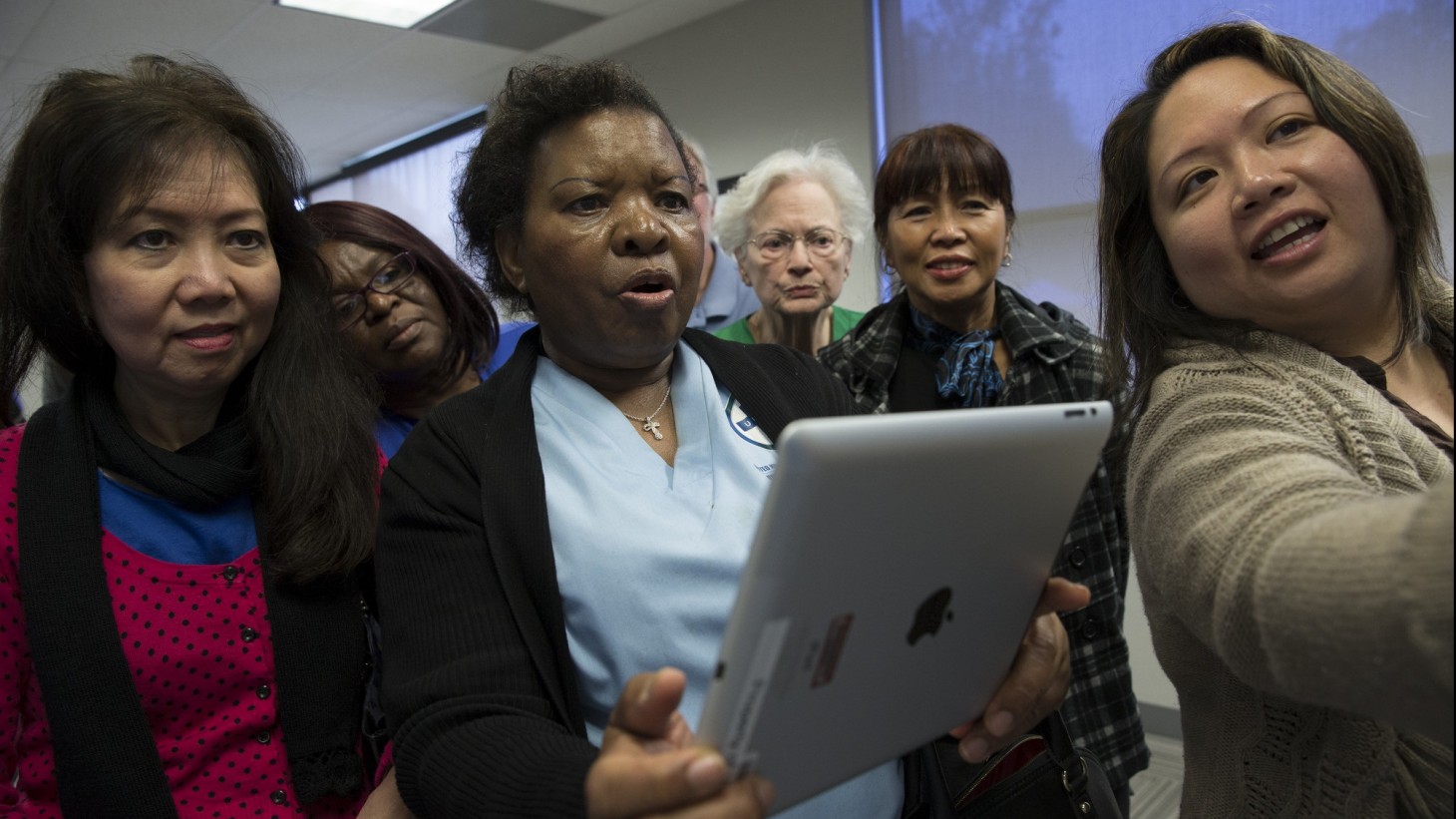Hank Q4-2017
See the whole issueThe Road Taken

Into the future: A digital fluency pilot program launched recently, one of many accomplishments of the LMP national programs.
20 years of national program results
Workforce Planning and Development
Key accomplishments
- Program enrollments in Kaiser Permanente’s two education trusts grew from about 3,000 in 2007 to nearly 62,000 in 2016.
- Tuition reimbursement course applications nearly tripled, from less than 20,000 in 2008 to more than 57,000 in 2016, largely benefiting members of unions in the Coalition of Kaiser Permanente Unions.
- Critical skills training launched in June 2017 with a Digital Fluency pilot program for more than 2,000 employees.
Going forward
- A top priority will be addressing the impact of economic, social and technological changes on care delivery and future KP staffing models. (Learn more at kpworkforce.org.)
Workplace Safety
Key accomplishments
- Since program inception in 2001, KP’s injury rate has been reduced by 69 percent.
- Injuries associated with patient handling and/or mobilization have decreased by 32 percent since 2011.
- The program-wide workplace safety strategy was strengthened in 2016, based on the National Safety Council’s model.
Going forward
- The strengthened safety strategy will be implemented, with the goal of closing the gap between KP’s injury rate and the Bureau of Labor Statistics adjusted injury rate for health care.
Total Health
Key accomplishments
- More than 76,000 employees have taken the Total Health Assessment (THA) since 2014.
- Ninety percent of eligible employees completed their recommended health screenings in 2014 and 2015, earning a $40 million payout under the Total Health Incentive Plan.
- More than 3,000 UBT health and safety champions helped teams across the organization conduct 1,756 wellness projects in 2016—a 45 percent increase from 2015.
Going forward
- New awareness campaigns, including one focusing on prediabetes education, will inform and empower employees to take charge of their own health and wellness.
Joint Marketing and Growth
Key accomplishments
- Helped secure more than $108 million in revenue for Kaiser Permanente in 2016.
- Supported the 20-year growth in the number of employees represented by a union in the Coalition of Kaiser Permanente Unions, from 57,000 to 116,000, and in Kaiser Foundation Health Plan membership, from 7.4 million members to 11.8 million.
- Since 2012, mobilized 51 union ambassadors who attended more than 300 community events and engaged more than 70,000 KP members and potential members—many of them unionized—increasing community knowledge and understanding of KP.
Going forward
- Through the expansion of health plan membership, support job security and the continued growth of the coalition.
Attendance
Key accomplishments
- Enhanced time-off benefits to provide incentives for appropriate use of sick leave.
- Developed the Time-Off Request Tracking System to provide greater flexibility and responsiveness in managing planned time off.
- Achieved 21 percent fewer lost workdays in high-performing UBTs.
Going forward
- Attendance data, systems and results will continue to be assessed and improved.
